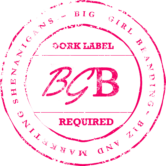Project Runway’s 10th season recently concluded after designer Dmitri Sholokhov was named the winner.
Sholokhov was rewarded with a $100,000 cash prize, a technology suite valued at $50,000 and a new luxury car.
He will also have his work featured in Marie Claire magazine and has the opportunity to sell an exclusive collection at the prestigious retailer Lord & Taylor.
For most aspiring entrepreneurs, this sort of windfall is a dream come true.
The combination of seed money and publicity will give this designer a solid foundation to recruit more investors and start a profitable business doing what he loves. (Score!)
While Sholokhov is in the minority when it comes to entrepreneurs, you don’t need to win a reality show contest to successfully build a small business.
Two important resources for your budding small business will be working capital and information management.
Without some cash flow, you won’t be able to set up an infrastructure that enables your business to thrive.
Without effective records, you won’t understand the cost of your goods or services and you won’t be able to price your products or services appropriately.
Here are some tips to make both a priority and an asset.
Build Your Business Credit
If you want to qualify for small business loans and other lines of credit in the future, start building credit when you start building your business.
Plenty of options are available geared specifically for small businesses. Many of them offer a variety of payment options, rewards, and interest rates so you can find one that fits your current budget.
It might seem like a lot of work to comb through the terms and conditions of all the available options to find the right fit, but a little research can really pay off in a big way.
Speaking as one who has seen a few lean months as a freelance writer, working capital during said lean months can be a God-send.
Whether you need to make payroll, meet business expenses, or just need to re-invest some funds back into your marketing strategy, cash-flow is vital.
Keep Biz and Personal Finances Separate
One of the most important things is to establish separate finances for your personal life and your business. (This is sometimes easier said than done, I very well know!)
If you’re building your business credit, as suggested above, you can just pull out your trusty American Express card (the business one, obviously) when you need to deal with a business expense.
Using a business credit card (provided you’re smart about it and pay it off on time) can make it so much easier to keep business expenses separate from your everyday personal ones.
It might seem silly to load your wallet with two checkbooks and two primary credit cards, but trust me, it’s far better than dealing with an IRS audit.
Yep, I said it.
IRS AUDIT
And if you “oh so casually” co-mingle business and personal finances all willy-nilly, you might wind up being considered a hobbyist. As a result you could be subjected to (unwanted) attention from the Internal Revenue Service.
I’ve learned my lessons in this regard the hard way, and trust me… it’s much better to start off on the right foot from day one, than it is to try and disentangle the financial web later because you chose to skip this rule in favor of convenience.
Setup an Accounting System
It’s essential that you track your expenditures.
It will ensure you can accurately evaluate spending, which has two major benefits: identifying cost-saving opportunities and allowing for accurate pricing of goods and services.
I personally use YNAB to track all of my spending, both business and personal. It’s a desktop application that can be sync’ed across multiple computers, and there’s also an iphone app for tracking spending on the go.
I often download bank transactions and import them into the program.
Then I just go through and label/categorize them. It’s really opened my eyes as to where money goes and has helped me keep track of my working capital so I don’t over-draft any accounts and get slapped with expensive bank fees. (Another regular occurrence once upon a moon.)
If you do use a business credit card for most of your business expenses, you can refer to the monthly statements for an easy way to get a snapshot of your spending and if you choose to, you can import that information into YNAB as well to include it in your over-all financial picture.
Try Crowdsourcing
Another wonderful new way to raise capital is through crowdsourcing. It’s a form of micro-lending where an entrepreneur appeals to the general public to fund his or her project.
A variety of methods and platforms exist to crowdsource your project, but it’s been a tremendously useful tactic for filmmakers, designers, even inventors of unique cell phone accessories.
There’s a really great and useful guide to starting a fashion line through Kickstarter (a popular crowdsourcing platform) on Fashionista’s website, it’s a good read for any creative entrepreneur.
Also, my gal Dusti used Kickstarter and successfully funded the growth of her book… all from crowdsourced funding.
So there’s definitely some potential there as well. Have a sit-down with yourself and put these tips into action. Your business and your future-self with thank you.
Over to You
Have you put all of these practices into play within your own business? How have they helped your growth? Please drop your thoughts in the comments below and if you found this read useful, please consider sharing it across your networks.
